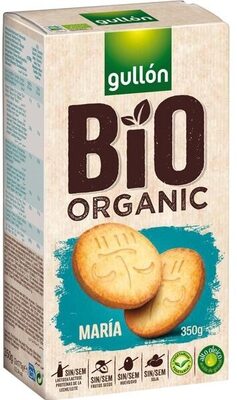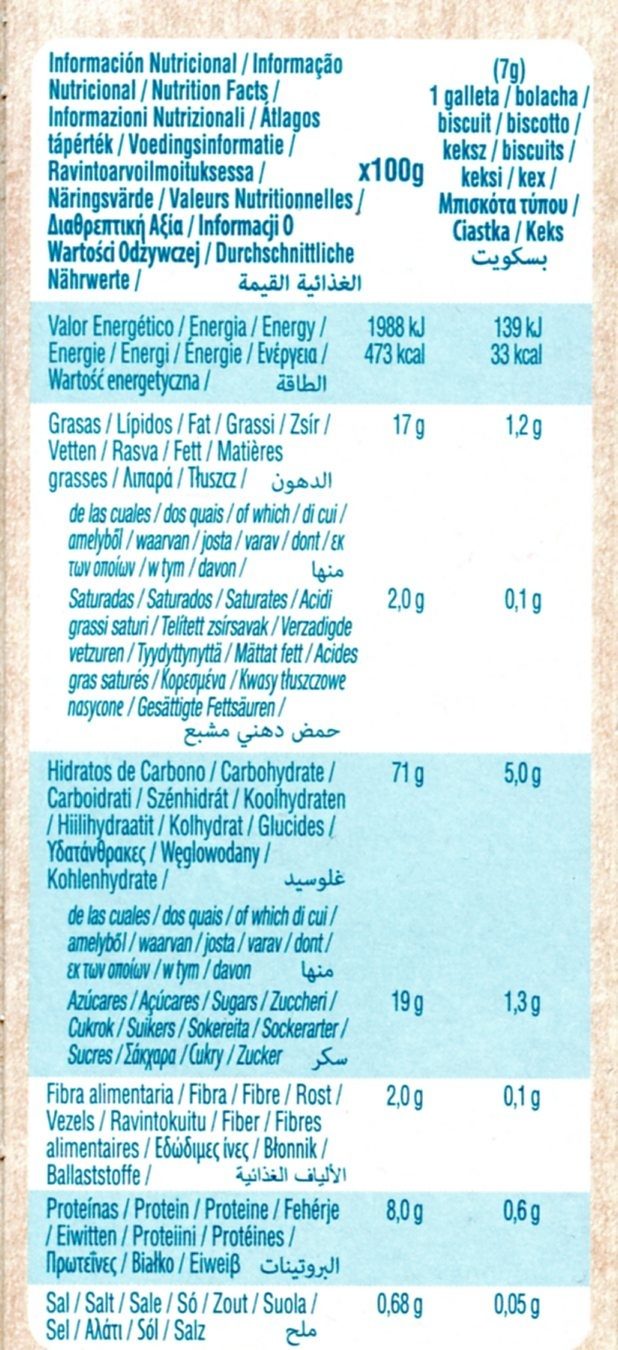Bio organic galletas maría sin lactosa, sin huevo, - Gullón - 350 g (2 x 175 g)
This product page is not complete. You can help to complete it by editing it and adding more data from the photos we have, or by taking more photos using the app for Android or iPhone/iPad. Thank you!
×
Código de barras: 8410376022476 (EAN / EAN-13)
Common name: Galletas María ecológicas
Cantidade: 350 g (2 x 175 g)
Empaquetado: en:Caja Recipiente
Marcas: Gullón
Categorías: en:Snacks, en:Sweet snacks, en:Biscuits and cakes, Galleta, es:Galletas maría, en:Botanas Snacks dulces Galletas y pasteles Galletas
Etiquetas, certificacións, premios:
en:Organic, en:EU Organic, en:No lactose, en:EcológicoVegetarianoEcológico UEEtiquetas de calidad de EspañaVeganoES-ECO-016-CLSin huevoSin lactosaSin lecheSin sojaEs-eco-033-clSin-frutos-secos
Lugares de fabricación ou procesamento: Aguilar de Campoo Palencia (provincia) Castilla y León España
Traceability code: NIF-A-34002501 GALLETAS-GULLON-S-A GRUPO-GULLON
Link to the product page on the official site of the producer: https://gullon.es/producto/maria-bio/
Tendas: Carrefour Aldi
Country: España, en:Francia España
Matching with your preferences
Medio ambiente
Carbon footprint
Empaquetado
Transportation
Etiquetas
Report a problem
Data sources
Product added on by javichu
Last edit of product page on by naruyoko.
Páxina do produto tamén editada por alex-off, allergies-app-chakib, inf, jabril, jog13ovd, kiliweb, maylord, musarana, neptuno, nica, off.29d37bbd-a8d0-4cb5-a0e8-643e8cadc8f3, openfoodfacts-contributors, packbot, roboto-app, scanbot, tacite, thaialagata, yuka.SEpBYUFLTUcrNlVTa3NBRTJ4N0V3dTV4ekorYmZWbVRLOHc4SVE9PQ, yuka.YUlVdFQ2WW5tT3NZd2YwaDJ4YjgwOGxmMThLNWJIcWVNTzRlSVE9PQ, yuka.YVlGWklQMHdxdWNwZzhBc3dpdnkxdndrOXAvM2RtZXdKc1lPSWc9PQ.











